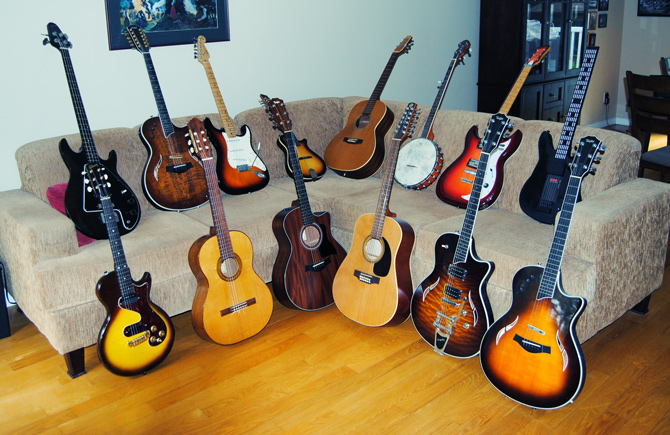The Summer of Love was a social phenomenon that occurred during the summer of 1967, when as many as 100,000 mostly young people converged in San Francisco’s Haight-Ashbury neighbourhood. Referred to as “hippies”, these people were known for the widespread use of hallucinogenic drugs, an anti-war stance and a free-love policy. Although centered on the West Coast of the United States, the hippie culture spread as far away as New York City and, to a lesser extent, North America and Europe.
During this time, there was an emphasis on sharing and community and a number of free stores and free medical clinics were established. Musician Scott McKenzie recorded the song “San Francisco (Be Sure to Wear Flowers in Your Hair)” and it served to promote and popularize the “flower children” of San Francisco. Released in May of 1967, the song was an instant success. There followed a bevy of American rock groups with wild, psychedelic names like The Strawberry Alarm Clock, The 13th Floor Elevators, Vanilla Fudge and The Electric Prunes. The more serious bands were Jefferson Airplane, the Grateful Dead, The Doors and The Byrds.
The media’s coverage of the hippie culture drew the attention of people from different age groups and political affiliations and the sociological theory of a generation gap first came to light in the 1960s, when the younger generation seemed to go against everything their parents had previously believed in. Music, values, governmental and political views as well as cultural tastes were all conflicted. The generation gap also created a parallel gap in language throughout society, creating complications within day to day communications at home, in the workplace, and within schools. As new generations seek to define themselves as something apart from the old, they adopt new language and slang, allowing a generation to create a sense of division from the previous one. Combined with the different music and different sensibilities, the latter part of the 1960s saw a general upheaval throughout all levels of society.
I have chosen to feature the music of Jefferson Airplane, an American rock band based in San Francisco that became one of the pioneering bands of the era. Formed in 1965, the group defined the San Francisco Sound and was the first from the area to achieve international commercial success. They headlined the Monterey Pop Festival (1967), Woodstock (1969), the Altamont Free Concert (1969), and the first Isle of Wight Festival (1968) in England. Their 1967 breakout album “Surrealistic Pillow”, a perfect title for this era, was one of the most significant recordings of the Summer of Love. Two songs from that album, “Somebody to Love” and “White Rabbit”, are among Rolling Stone Magazine’s “500 Greatest Songs of All Time”. “White Rabbit”, with its Alice in Wonderland imagery, is in my opinion the best song of the decade.Jefferson Airplane consisted of Marty Balin (guitar and vocals), Paul Kantner (guitar, vocals), Grace Slick (vocals), Jorma Kaukonen (lead guitar, vocals), Jack Casady (bass), and Spencer Dryden (drums). The group was inducted into the Rock and Roll Hall of Fame in 1996 and received a Grammy Lifetime Achievement Award in 2016.
Earlier this year, I received a visit from two musicians, Carl Wilson from Québec and Richard Trahan from Germany, who, in the early 1980s, recorded an album of acoustic guitar duets taken from their favourirte composers, including two of my own compositions. The three of us have been friends ever since. During their visit, I played them my recording of “Coming Back To Me” and Carl played Jorma Kaukonen’s guitar instrumental “Embryonic Journey” on my electric 12-string guitar. Both pieces are from the “Surrealistic Pillow” album and both are featured below.To hear the pieces, click on the title below.
Carl Wilson – electric 12-string guitar
Richard Séguin – voice, acoustic guitar, mandolin, electric bass guitar



Ajouter un mot
You must be logged in to post a comment.